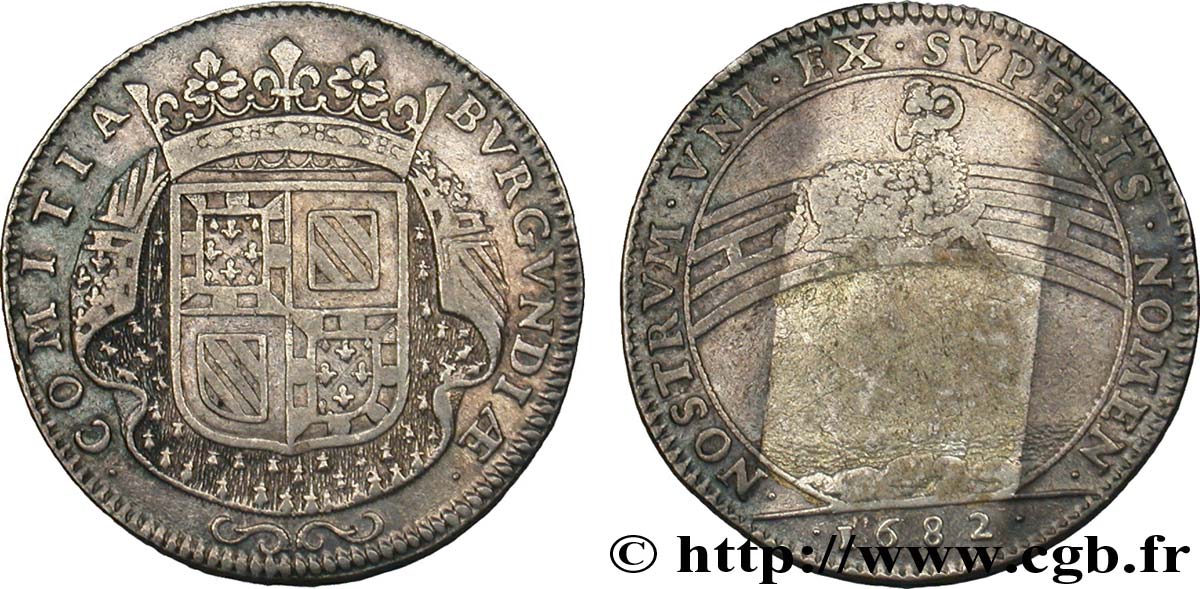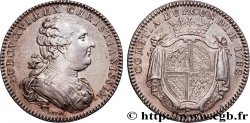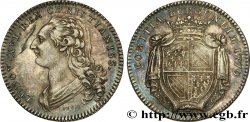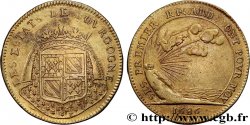fjt_059026 - BURGUNDY (STATES OF...) Jeton AR 28, naissance du petit-fils de Louis XIV 1682
145.00 €(Approx. 168.20$ | 126.15£)
Quantity
Add to your cart

Type : Jeton AR 28, naissance du petit-fils de Louis XIV
Date: 1682
Metal : silver
Diameter : 28,5 mm
Orientation dies : 6 h.
Weight : 7,15 g.
Edge : lisse
Rarity : R2
Coments on the condition:
Manque de patine au revers de haut en bas
Obverse
Obverse legend : .COMITIA - BVRGVNDIÆ..
Obverse description : Armes de Bourgogne sur un manteau d’hermines.
Obverse translation : (États de Bourgogne).
Reverse
Reverse legend : NOSTRVM. VNI. EX. SVPERIS. NOMEN..
Reverse description : Un bélier sur le zodiaque ; à l’exergue : .1682..
Reverse translation : Un des dieux porte mon nom.
Commentary
En 1682, le petit-fils de Louis XIV naquit à Versailles le 6 août. Les Élus qui se trouvaient à Paris en ce moment s'empressèrent de faire allusion à cet heureux événement. Le roi étant le soleil, ils crurent ne pouvoir mieux faire que de représenter le premier signe du zodiaque, Aries ou le bélier. La devise fut une étrange flatterie : Un des Dieux porte mon nom. Le jeton de 1682 fut gravé au mois d'octobre par F. Chéron, graveur des médailles du roi. Il reçut 8.221 liv. 16 sols, savoir : 3.722 liv. 2 s. 6 d., pour 200 jetons d'or destinés au prince de Condé et au duc d'Enghien ; 4.117 liv. 16 s. 4 d., pour 121 marcs 5 gros d'argent, à raison de 34 liv. le marc, y compris la façon. Plus, pour 90 bourses de cuivre de 100 jetons chacune, à raison de 3 liv. la bourse ; plus 100 liv. pour la façon des coins et 12 liv. pour les vins aux ouvriers qui monnayèrent les jetons. Les bourses furent fournies par H. Tresneau, et coûtèrent 392 l. 10 s..
In 1682, the grandson of Louis XIV was born at Versailles on August 6. The Elected Officials who were in Paris at the time hastened to allude to this happy event. The king being the sun, they believed they could do no better than to represent the first sign of the zodiac, Aries or the ram. The motto was a strange flattery: One of the Gods bears my name. The token of 1682 was engraved in October by F. Chéron, engraver of the king's medals. He received 8,221 livres 16 sols, namely: 3,722 livres 2 s. 6 d., for 200 gold tokens intended for the Prince of Condé and the Duke of Enghien; 4,117 livres 16 s. 4 d., for 121 marcs 5 gros of silver, at a rate of 34 livres per marc, including the workmanship. Plus, for 90 copper purses of 100 tokens each, at a rate of 3 livres per purse; plus 100 livres for the making of the coins and 12 livres for the wines for the workers who minted the tokens. The purses were supplied by H. Tresneau, and cost 392 l. 10s.
In 1682, the grandson of Louis XIV was born at Versailles on August 6. The Elected Officials who were in Paris at the time hastened to allude to this happy event. The king being the sun, they believed they could do no better than to represent the first sign of the zodiac, Aries or the ram. The motto was a strange flattery: One of the Gods bears my name. The token of 1682 was engraved in October by F. Chéron, engraver of the king's medals. He received 8,221 livres 16 sols, namely: 3,722 livres 2 s. 6 d., for 200 gold tokens intended for the Prince of Condé and the Duke of Enghien; 4,117 livres 16 s. 4 d., for 121 marcs 5 gros of silver, at a rate of 34 livres per marc, including the workmanship. Plus, for 90 copper purses of 100 tokens each, at a rate of 3 livres per purse; plus 100 livres for the making of the coins and 12 livres for the wines for the workers who minted the tokens. The purses were supplied by H. Tresneau, and cost 392 l. 10s.








 Report a mistake
Report a mistake Print the page
Print the page Share my selection
Share my selection Ask a question
Ask a question Consign / sell
Consign / sell
 Full data
Full data










